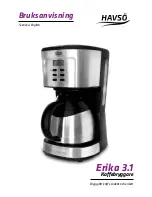
Working method
The ZIEGRA chip-ice machine is delivered ready for operation and has only to be connected to power and water supply.
No operating personnel is required.
The machine works fully automatically.
Water flows by gravity from the water chamber in the ice-
machine into the freezing cylinder. An evaporating coil
(e.g. R404) surrounds the cylinder, freezing the water inside
at an evaporation temperature of -20° C up to - 30° C.
An auger continuously scrapes thin layers of ice from the
inner cylinder wall and conveys it upwards. There the ice
is compacted, frozen further and subsequently broken off.
By this procedure the refrigeration energy can freeze the followig water without loss.
If the ice layer would become 1 or 2 mm thick, an unnecessary amount of energy would have to be used for freezing
due to the high insulating capacity of ice.
The
ideal ice thickness of 6 - 9 mm
at low energy consumption can be achieved thanks to the idea of subsequently
compacting the ice.
The ice being frozen on the inner wall of the cylinder, the refrigeration system of ZIEGRA Chip Ice Machines
is completely sealed. The rotating auger does not form part of the refrigeration circuit.
Therefore leakages in the refrigeration system caused by rotating parts cannot occur.
The ideal ice temperature is -0,5° C
ZIEGRA Chip-ice has the ideal temperature of - 0,5° C .
It is irregular and crystalline in structure and always stays loose.
In contrast with other types of ice it can be stored without being sub-cooled and never freezes up.
ZIEGRA-Cip-Ice
is frozen within the patented freezing cylinder at an evaporation temperature of -20° C up to -30° C.
Due to the special procedure maximum refrigeration capacity is obtained at a very low energy consumption.
Cooling energy:
The uninterupted line shows the accumulated energy per kg of ice
(refrigeration energy).
Only when ice having a temperature of 0° C
melts to water of 0° C, the considerable
Refrigeration Capacity of
80 Kcal / kg
is released (vertical line)
The cooling capacity of water per °C is
(left line)
1 Kcal / kg,
Ice tempeartures below 0° C give only
0,5 Kcal / kg.
Energy consumption:
The broken line shows the minimum electric energy consumption
necessary for every ice production.
For an ice temperature of 0° C energy input and the
refrigeration capacity produced are closely correlated.
Only when ice is unnecessarily cooled to temperatures below 0° C,
the energy required rises disproportionately.
1



























